Before I begin, I have a confession to make: I am in love with Asian supermarkets. Being of South Asian heritage, my family has been frequenting Asian specialty grocery stores for more than a decade, however once I truly explored each and every aisle of one is when I finally learned to appreciate them. The variety of foods available at a place like Super H-Mart is truly one-of-a-kind and truly out-of-this-world.
But, navigating one is not so easy: foreign brands, foreign ingredients, foreign words and foreign images (tbh you might as well be in a foreign country in Asia). Oh and let’s not forget about pungent smells, whose culprit is oftentimes none other than the seafood butchering aisle.
But have no fear. Once you explore an Asian supermarket, the aisles are easier to get around and you can be cooking Pan-Asian meals like a pro in no time.
So, for Asian supermarket first-timers, here is my recommended list of items to try that are both adventurous for one’s culinary palate, yet safe within one’s culinary comfort zone.
Boba (Tapioca Pearls)
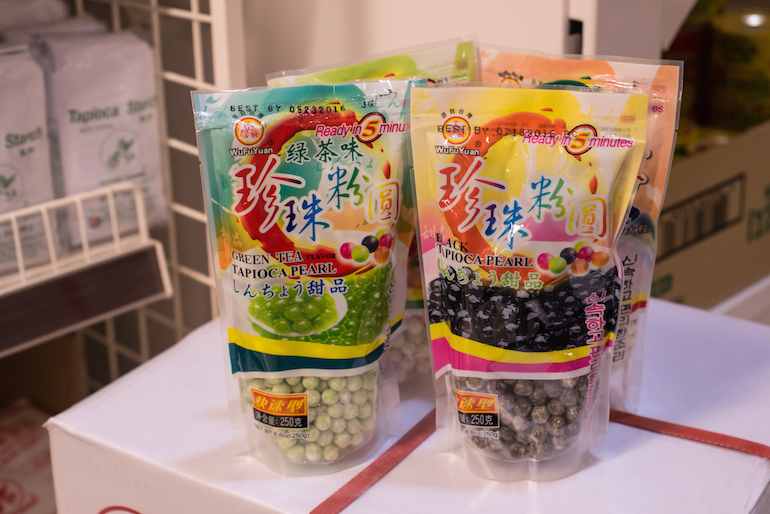
Photo by Gabi Rosenthal
Many people know this as the star ingredient of bubble tea, a Taiwanese tea drink that has become exponentially popular in recent years despite its inception in the 1980s.
By purchasing these bad boys, making bubble tea at home is easier than ever, although if you are trying to replicate restaurant-style bubble tea I would advise purchasing the black tapioca pearls versus the white or multicolored tapioca pearls.
Condiments (Sriracha doesn’t count)
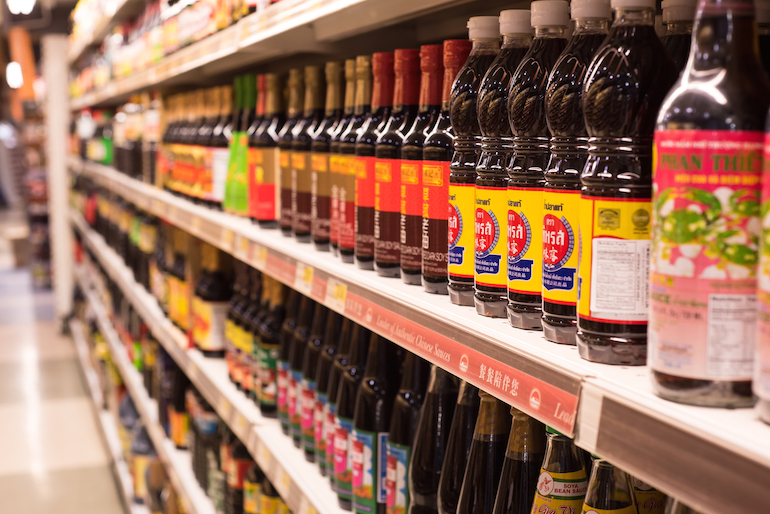
Photo by Gabi Rosenthal
When it comes to buying condiments at an Asian specialty store, it is nearly impossible to go wrong. There are literally hundreds of varieties of sauces to choose from and just a quick glance at their respective ingredients lists will have you hooked on your latest obsession in no time.
Speaking of respective ingredients, I WOULD STRONGLY RECOMMEND glancing at their lists of ingredients, especially if you’re a picky eater (ahem moi) or if you have specific dietary restrictions (i.e. nut allergies) in general. Suggestions for specific condiments to try: hoisin sauce, ponzu sauce, Terry Ho’s Yum Yum sauce, and oyster sauce.
Jelly Cups
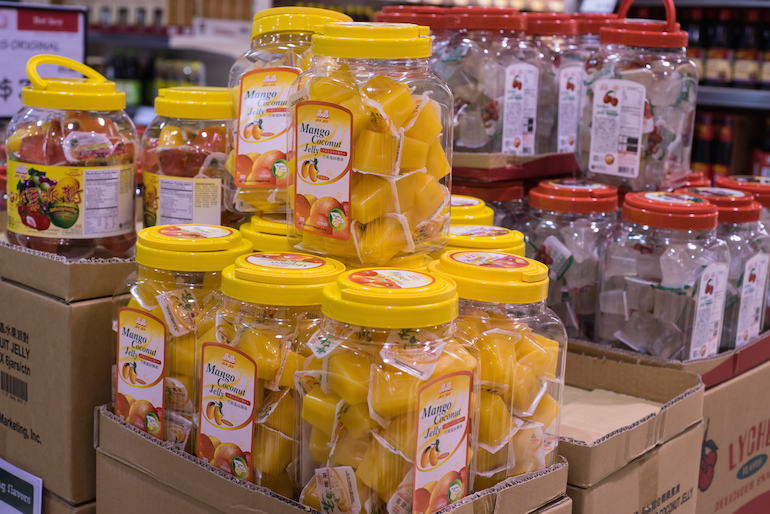
Photo by Gabi Rosenthal
This Asian delectable was definitely a favorite in my household growing up. These miniature gelatinous sweets are virtually no mess and the ultimate road trip snack.
Jelly cups are available in giant tubs of multiple flavors and are a fun way to introduce young children (who aren’t prone to choking hazards) to Asian snacks. My dessert-loving mother can also assure you that adults will find them equally scrumptious.
Matcha (Green Tea Powder)
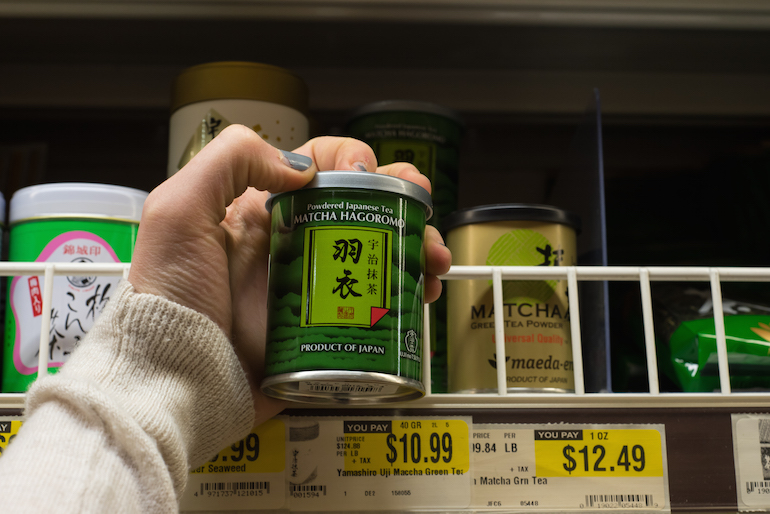
Photo by Gabi Rosenthal
If you are a Starbucks aficionado, then this green-colored ingredient should be fairly familiar to you. That’s right, this magical powder (commonly referred to in Japan as matcha) is what gives your green tea latte, green tea frapp, and any other green tea favorite dessert/drink of yours its authentic flavor.
DISCLAIMER: PURE MATCHA IS VERY EXPENSIVE. LIKE HELLA. Due to its delicate harvesting process, green tea powder in its purest form can cost anywhere between a staggering $10-$20 for a less than 3-ounce tin (no one ever told me this before I went into the tea aisle to find this and almost fainted).
Try purchasing the green tea mixes that are a pre-established ratio of green tea powder to granulated sugar (or other sweetener alternatives) for half the price and almost double the amount of product value.
Mochi
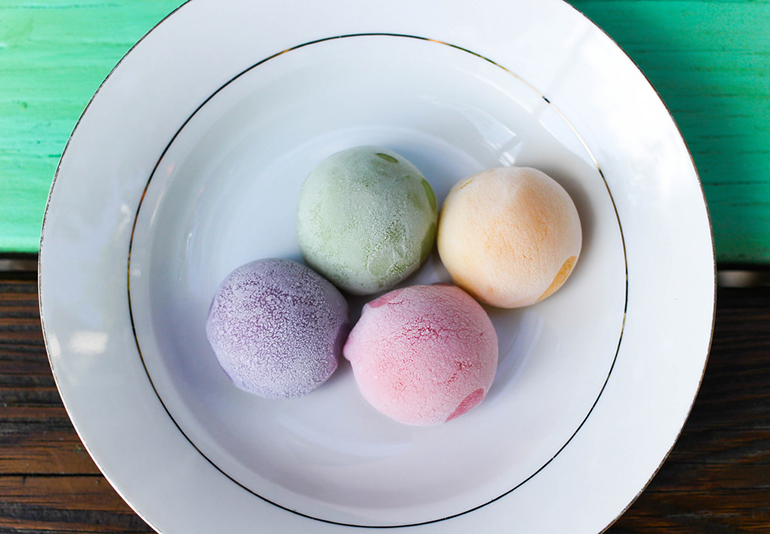
Photo by Gabby Phi
Frequently seen as a topping option at fro-yo franchises, mochi is a Japanese confection. However, unlike the minuscule cubes of glutinous (not to be confused for containing gluten) sweetness they are usually associated with ice cream, mochi in Asian specialty markets is available in a plethora of different shapes, sizes, and even colors and is often found in plastic wrapping and/or plastic containers in order to preserve freshness.
Another form of mochi available in these stores is mochi ice cream.
Native Fruit
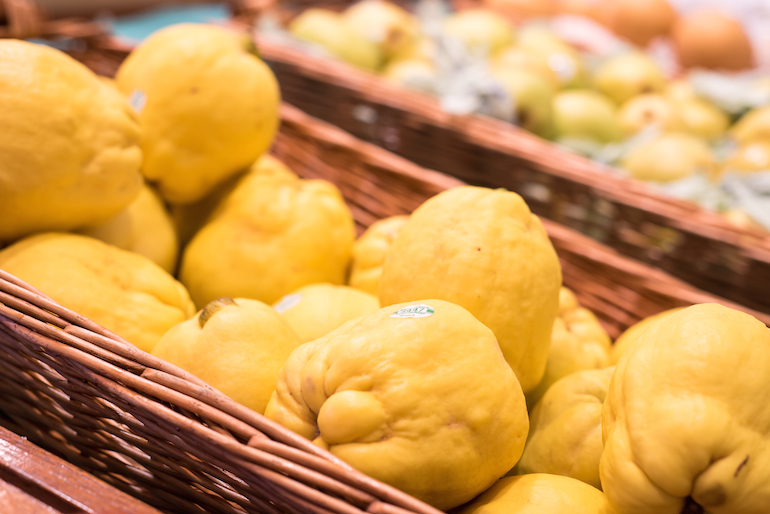
Photo by Gabi Rosenthal
As intimidating as it sounds, indigenous fruits to Asia are easily some of the most hidden gems of an Asian supermarket from the common mango to lychees to persimmons. Definitely research the fruit prior to purchasing.
Nori
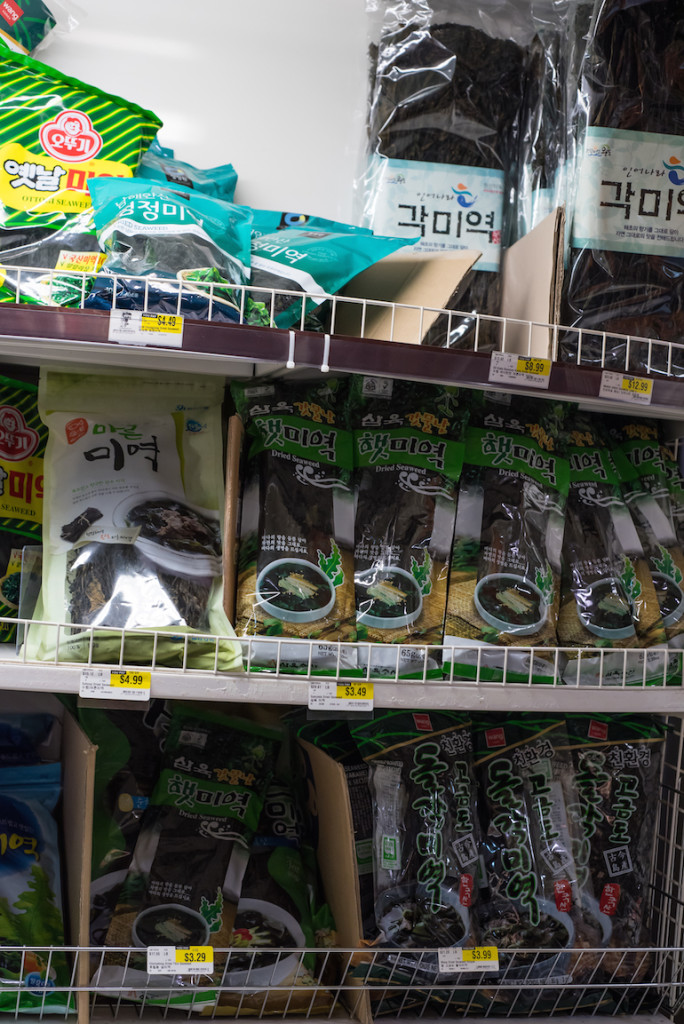
Photo by Gabi Rosenthal
Known in the western world as “seaweed”, nori is popular for its importance in sushi-making and is widely available in dried form. This dried form of nori makes it a great to-go snack, not to mention a great low-carb substitute to chips.
Ramen
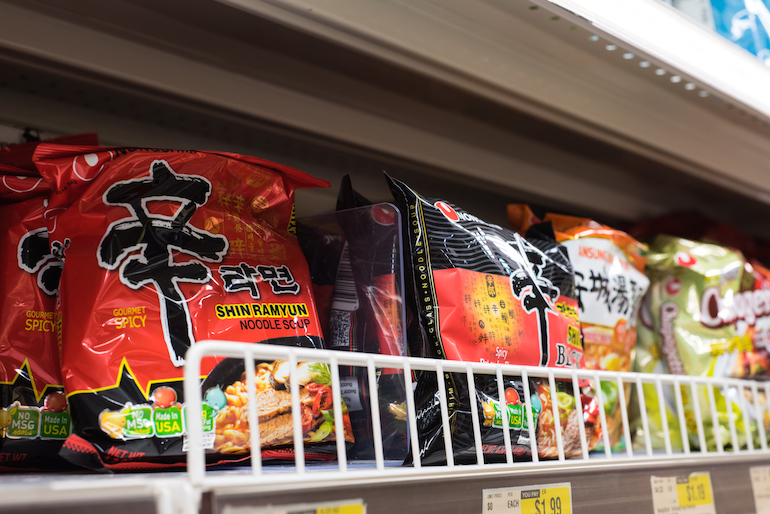
Photo by Gabi Rosenthal
Perusing the Ramen aisle of an Asian grocery store is like accidentally stumbling upon a Pandora’s box full of options but for the most delicious instant noodles that you have ever tasted in your lifetime. Here are some ideas for foreign instant noodle packets that are worth trying to see for yourself what the hype is all about.
Ramune
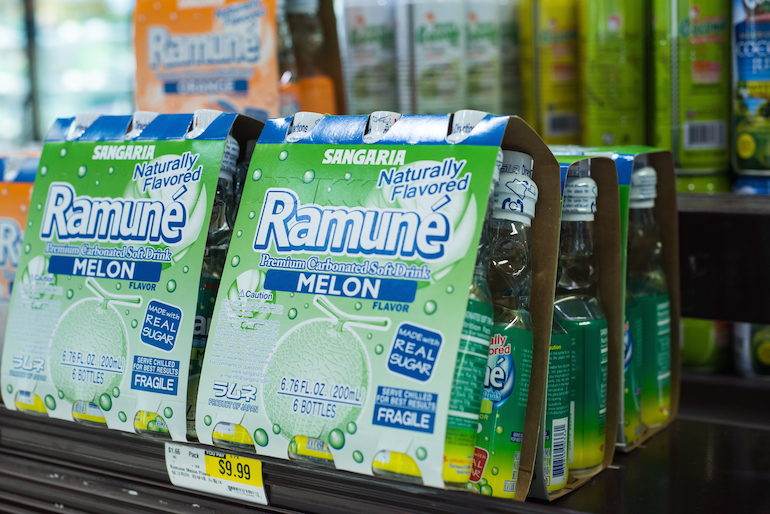
Photo by Gabi Rosenthal
These carbonated beverage bottles can be found on virtually every hibachi restaurant’s drink menu throughout the nation. What makes these fruit-flavored marble sodas unique are their distinctive Codd-neck bottles which fascinate kids and adults alike.
Ramune can be found in the drinks/refrigerated aisle of Asian supermarkets and is available in over 35 different flavors. Out of the ones I’ve tried, I can vouch for the OG (lemon-lime), lychee, and strawberry, but my all-time favorite is probably pineapple.
Shichimi togarashi
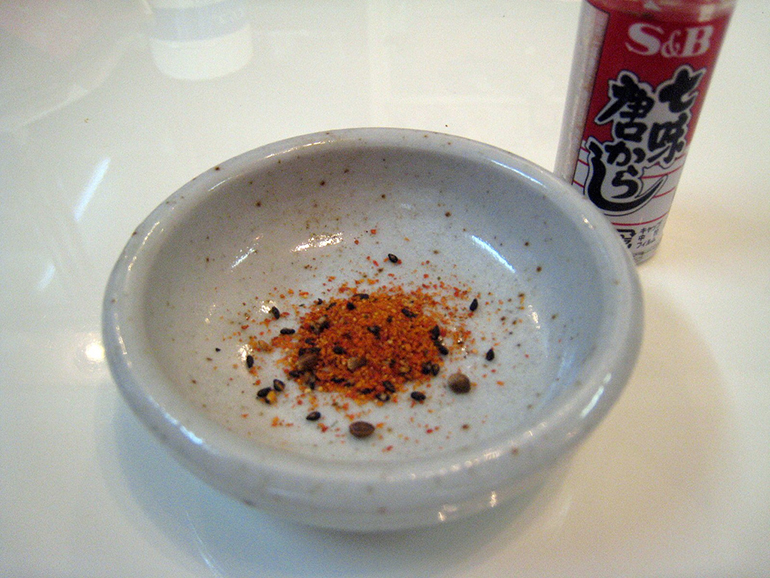
Photo courtesy of Ad Blankestijn via flickr.com
A daunting name for an incredibly flavorful spice blend. Shichimi is typically sold near temples in Japan and is used as seasoning for dishes such as soups, noodles, rice cakes and the traditional gyūdon (beef bowl).
However, Bon Appétit magazine recently discovered it to be equally delicious sprinkled on top of fresh slices of watermelon so go figure.
Panko
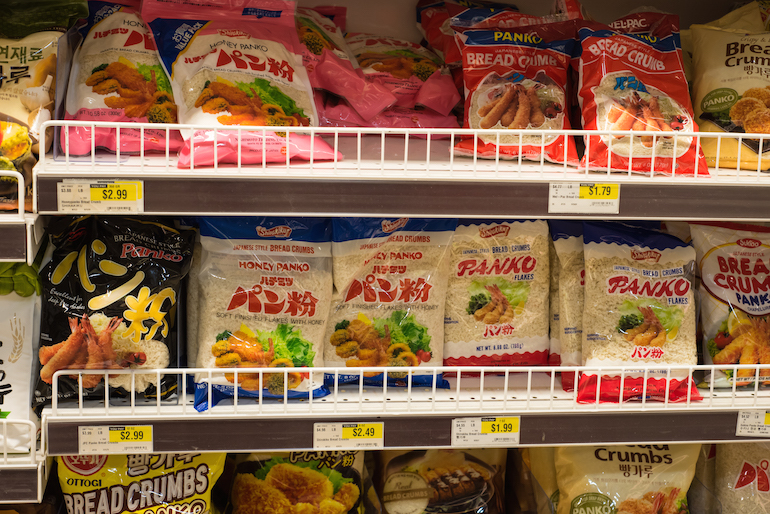
Photo by Gabi Rosenthal
Nearly every celebrity chef on Food Network has highly praised this particular ingredient for years, and it is easy to see why. Panko breadcrumbs serve as the ideal alternative to regular breadcrumbs due to its unique texture. Here is a complete breakdown of the comparisons between Panko and Western-style breadcrumbs.
Pocky
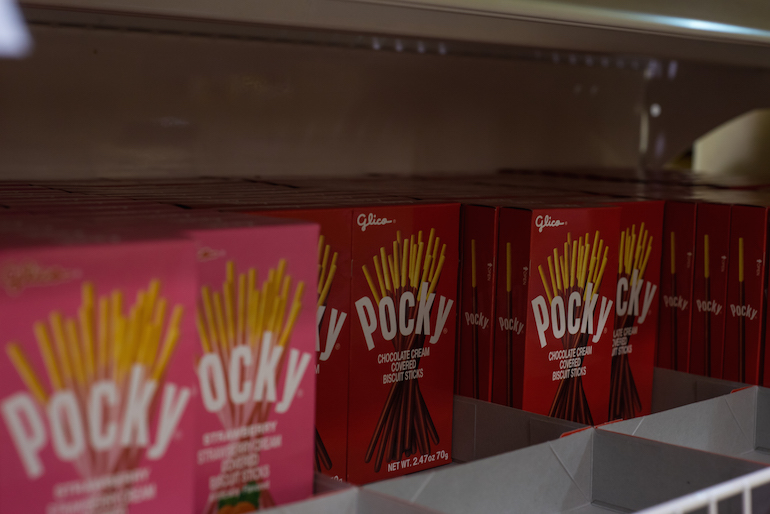
Photo by Gabi Rosenthal
I was first introduced to this tasty treat as an elementary schooler during lunchtime when we all used to trade snacks like a boss. Fast forward (or Flashback Friday) to a few weeks ago when I rediscovered it in the international aisle of my local Publix. These Japanese snack foods are addictive, great on-the-go, and can satisfy any sweet tooth for less sugar at a fraction of the calories.
Potstickers
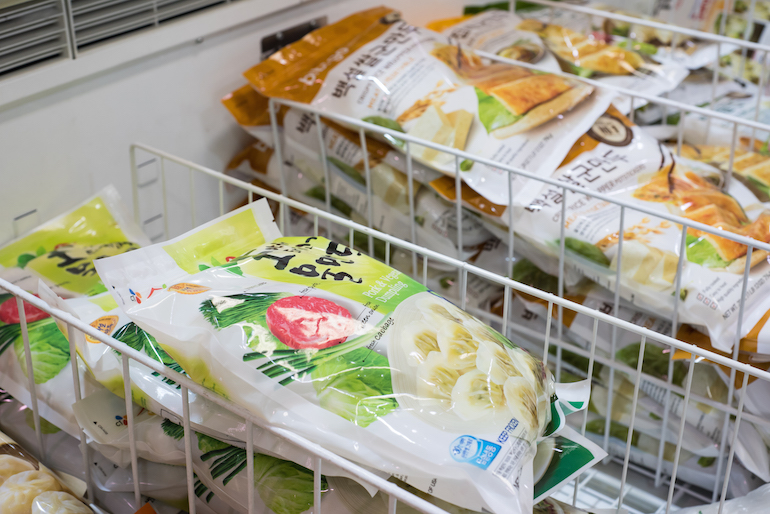
Photo by Gabi Rosenthal
Talking about potstickers is a stroll down memory lane for me. Potstickers, also colloquially referred to as dumplings, have fillings made of ground meat and vegetables, wrapped in a piece of dough and then either steamed, pan-friend, or boiled depending on the type of potsticker (or personal preference really).
These pockets of deliciousness can be found in the refrigerated section of Asian specialty markets and on certain days they are served like Costco-style samples in that specific aisle.
Thai Tea Mix
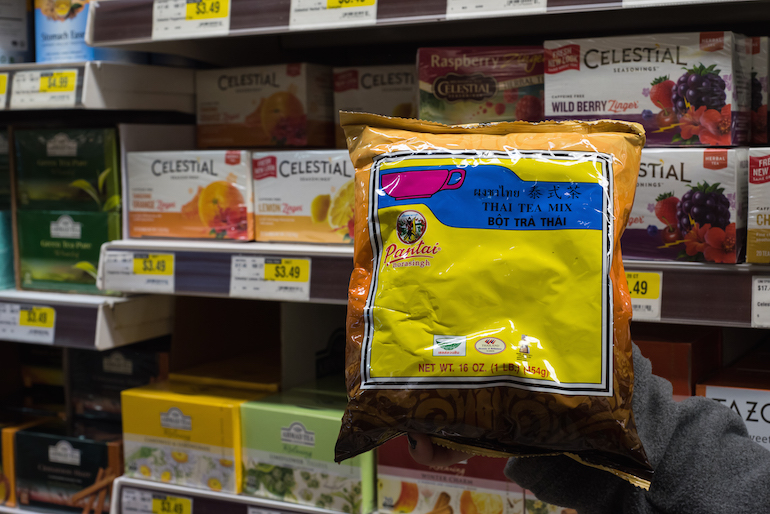
Photo by Gabi Rosenthal
For those of you dying to replicate Thai iced tea in the comfort of your own home: your prayers have finally been answered.
In the tea aisle of the Asian supermarket, you can find pre-blended packets. This recipe recommends the Panthai Thai Tea Mix, and from trying it myself I can honestly, swear-on-my-life say that Panthai has managed to replicate the restaurant-style Thai iced tea right down to the T (or should I say “tea” hehehe bad pun, but I had to).
Wasabi-Flavored Snacks
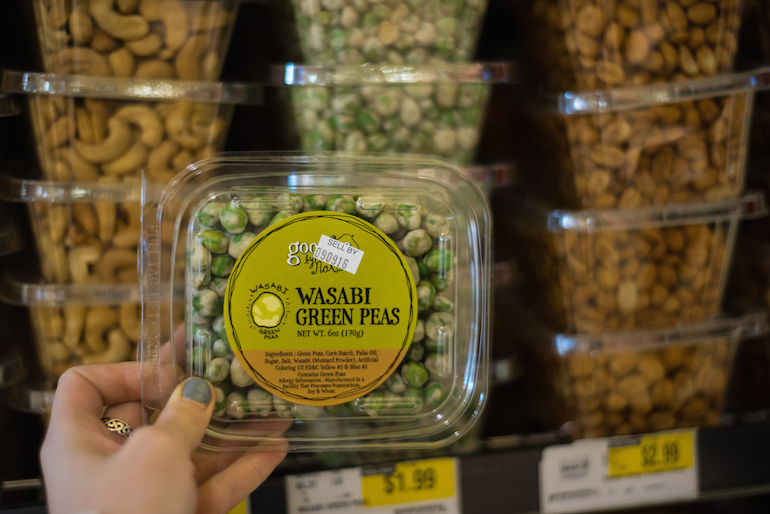
Photo by Gabi Rosenthal
When people usually hear the word wasabi, smoke coming out of ears to the flavor of a goopy, green paste usually comes to mind. However, wasabi-flavored edibles aren’t as spicy as they sound. In fact, the flavor is more like a light peppery coating than the fiery sushi condiment that we’re used to. Personal favorites include wasabi-roasted peas.
The greatest piece of advice I can give in this particular article is to consider bringing along a friend (or friends, if you’re Regina George like that) with you, preferably one(s) who knows their way around an Asian supermarket.
They can help you find the ingredients that you are looking for without you looking like a lost puppy trying to find its way home, because let’s be real, we all hate looking blatantly lost in public. Plus, they can suggest some of their favorites which may or may not be on the list provided here.


